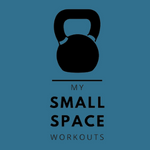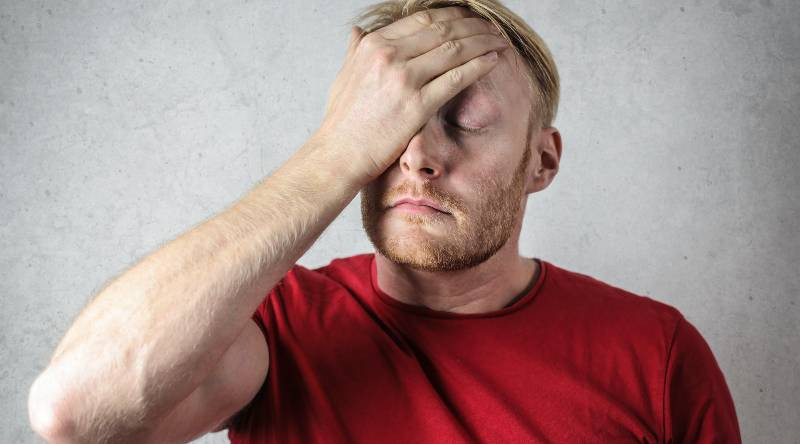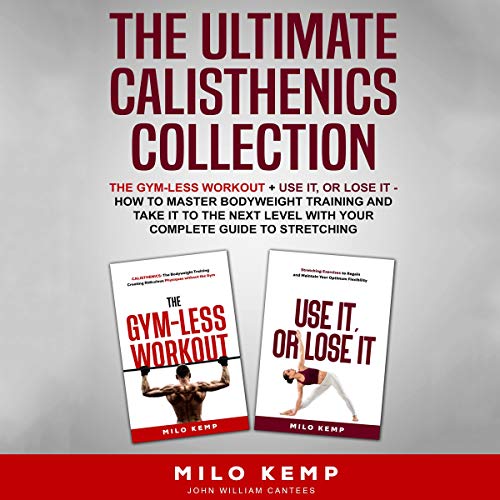Are you someone who loves hitting the gym and pumping some iron, but are plagued by the pesky problem of hemorrhoids? Fear not, for you are not alone! In fact, many weightlifters have experienced the discomfort of hemorrhoids – as have I! But I’m here to attest that you needn’t let this embarrassing ailment deter you from reaching your fitness goals. In this article, we will explore the ins and outs of lifting weights with hemorrhoids and I will provide some helpful tips for staying comfortable while getting fit. So grab your tube of anusol and let’s get started!
Just a friendly heads up, this article contains affiliate links, including Amazon affiliate links. But don’t worry, I only recommend products that I believe in and think will be valuable to you. And if you do choose to make a purchase through one of these links, it won’t cost you a penny extra! I just get a small commission, which helps me to keep the lights on and bring you even more awesome content. As an Amazon Associate, I earn from qualifying purchases. So, thanks for your support and please don’t forget to share the article and leave me a comment!
What are hemorrhoids and how do they affect weight lifting?
Hemorrhoids are a common condition that affect the veins in the rectum and anus. They are often caused by straining during bowel movements, which can occur as a result of constipation or other factors. In some cases, hemorrhoids can also be caused by increased pressure on the veins in the anus, such as during pregnancy or heavy lifting.
Symptoms of hemorrhoids include itching, pain, and swelling around the anus. In severe cases, hemorrhoids can cause bleeding during bowel movements.
While hemorrhoids can affect anyone, they are more common in people who are overweight or obese. This is because excess body weight can put additional pressure on the veins in the anus, which can lead to the development of hemorrhoids.
However, I’ve never been overweight, and I know from conversations in the gym, that hemorrhoids can be a particular concern for gym-goers.. This is because heavy lifting can put extra pressure on the veins in the derriere, which can worsen existing hemorrhoids or even cause new ones to develop.
If you have hemorrhoids and want to continue lifting weights, it’s important to take steps to prevent them from getting worse. This can include avoiding constipation and straining during bowel movements, as well as using over-the-counter creams or ointments to reduce swelling and relieve discomfort.
It’s also a good idea to take a break from lifting heavy weights if you have severe hemorrhoids, until such time your hemorrhoids have improved.
If you have hemorrhoids and want to continue lifting weights, it’s important to take steps to prevent them from worsening and to listen to your body if you’re experiencing discomfort.
Can hemorrhoids cause pain or discomfort during weightlifting?
If you have hemorrhoids and engage in weightlifting, you may experience pain during or after your workouts – especially if you’re pushing the limits in terms of weghts.
This pain is caused by the increased pressure on the veins that occurs during heavy lifting. This pressure is highly likely to exacerbate existing hemorrhoids, causing them to become even more swollen and painful.
The pain associated with weightlifting and hemorrhoids can range from mild to severe, depending on the severity of your hemorrhoids and the amount of weight you are lifting.
In some cases, the pain may be a dull ache that is only noticeable when you are lifting heavy weights. In other cases, the pain may be more intense, causing discomfort even when you are not lifting weights.
In my case, it was a persistent, dull, dragging sensation that made life miserable – both in the gym and out of it.
What are the risks of lifting weights with hemorrhoids?
Before we consider how you can continue to lift weights despite your hemorrhoids, it’s important that we discuss the risks. So here are the five main risks you need to be aware of:
- Increased pain and discomfort: If you have hemorrhoids and continue to lift weights, you may experience increased pain and discomfort. This can be due to the increased pressure on the veins in the anus that occurs during heavy lifting, which can exacerbate existing hemorrhoids and make them more swollen and painful.
- Worsening of hemorrhoids: Continuing to lift weights with hemorrhoids can also lead to a worsening of the condition. The increased pressure on the veins in the anus can cause existing hemorrhoids to become more severe, resulting in more swelling, itching, and discomfort.
- Development of new hemorrhoids: Heavy lifting can also increase the risk of developing new hemorrhoids. The increased pressure on the veins in the anus can cause them to become swollen and inflamed, leading to the formation of new hemorrhoids.
- Risk of complications: If you have severe hemorrhoids and continue to lift heavy weights, you may be at increased risk of complications such as bleeding or infection. It’s important to seek medical attention if you experience any of these symptoms, as they can be serious and require treatment.
- Interference with weightlifting goals: Finally, continuing to lift weights with hemorrhoids can also interfere with your weightlifting goals. The pain and discomfort associated with the condition can make it difficult to focus on your workouts and perform at your best, potentially hindering your progress.
What are some alternative forms of exercise for those with hemorrhoids?
While exercise is generally beneficial for overall health and wellness, certain types of exercises can put excessive pressure on the veins in the rectal area and worsen hemorrhoids.
Exercises to avoid with hemorrhoids include:
- Heavy weightlifting or other activities that involve straining or bearing down, such as leg presses or squats. These exercises can put a lot of pressure on the rectal veins and worsen hemorrhoids.
- High-intensity interval training (HIIT) or other intense cardio workouts, such as running or cycling. These types of exercises can cause the veins in the rectal area to become engorged with blood, which can make hemorrhoids worse.
- Sit-ups or other abdominal exercises that involve contracting the abdominal muscles. These exercises can put pressure on the veins in the rectal area and worsen hemorrhoids.
Instead of these exercises, if you’re suffering with hemorrhoids, try to focus on low-impact activities that don’t put excessive pressure on the rectal veins.
Some examples include swimming, walking, or gentle stretching. It’s also important to stay hydrated, eat a high-fiber diet, and avoid prolonged sitting or standing to help prevent the worsening of hemorrhoids.
Transition to Calisthenics for a Safer Fitness Journey During Hemorrhoid Recovery – Yours Free!
Dealing with hemorrhoids doesn’t mean your fitness goals have to be put on hold. While heavy lifting might exacerbate your condition, there’s a seamless way to maintain muscle tone and strength: calisthenics.
To guide you through this adjustment, “The Ultimate Calisthenics Collection: The Gym-Less Workout + Use It, or Lose It” by Milo Kemp, available for free for you to keep forever when you sign up for an Audible trial, is an indispensable resource.
This double audiobook not only introduces you to bodyweight training that’s gentle on your body but also enriches your recovery period with stretching techniques vital for healing and prevention.
Start your calisthenics journey today, claim your free audiobook, and let your recovery be just as strong as your workouts.
If you want to continue weightlifting, they should focus on exercises that don’t put excessive pressure on the rectal veins.
This can include upper body exercises such as bench presses, shoulder presses, and bicep curls, as well as exercises that engage the upper body and core muscles, such as plank variations or push-ups.
It’s important to use good technique and avoid straining or bearing down during these exercises.
Using lighter weights and taking regular breaks can also help prevent irritation and worsening of your hemorrhoids. It’s always a good idea to consult with a doctor or physical therapist before starting or continuing a weightlifting program to ensure it is safe and appropriate for your individual needs.
If you’re adamant that you want to continue to to train legs while you are suffering from hemorrhoids, then we would advise you to consider swapping barbell squats for the veritcal leg press.
The vertical leg press is a weightlifting exercise that involves pressing a weight upward with the feet while lying on a bench or seated in a machine. This exercise targets the muscles in the legs, including the quadriceps, hamstrings, and glutes.
There are several reasons why the vertical leg press may be a better option than the barbell squat for some people. One reason is that the vertical leg press allows for more precise control over the range of motion and the amount of weight used.
This can make it easier to avoid straining or overloading the muscles, which can be a concern with the barbell squat.
Another reason is that the vertical leg press is less demanding on the lower back and core muscles.
The barbell squat, on the other hand, requires a significant amount of stability and strength from these muscles, which can be challenging for some people.
Additionally, the vertical leg press can be safer for people with certain medical conditions or injuries that affect the lower body.
For example, people with knee pain or instability may find the vertical leg press to be a more comfortable and manageable option than the barbell squat.
When should you seek medical advice before lifting weights with hemorrhoids?
If you are considering lifting weights, it’s important to be aware of the potential risks and to consult with a healthcare professional.
There are several signs that a person should seek medical advice before lifting weights with hemorrhoids, including:
- Pain or discomfort during or after weightlifting.
- Bleeding or swelling in the rectal or anal area.
- Difficulty urinating or having bowel movements.
- Prolonged or severe pain or discomfort.
Overall, if someone with hemorrhoids experiences any of these signs while lifting weights, they should seek medical advice before continuing with the activity. It’s important to address any underlying health issues and develop a safe and appropriate exercise plan to prevent further irritation or injury.
It’s also important to rule out any other causes of these worrying symptoms.
Weightlifting with Hemorrhoids: Don’t Let It Be a Pain in the Rear!
As we have discovered, lifting weights with hemorrhoids can be a real pain in the butt!
But with the right precautions and a little bit of common sense, it’s possible to continue streng training without causing further irritation or injury.
I hope you’ll explore the world of bodyweight training as a temporary reprieve from heavy lifting by checking out “The Ultimate Calisthenics Collection: The Gym-Less Workout + Use It, or Lose It” by Milo Kemp.
However you choose to continue your fitness journey, just remember to warm up properly, use good technique, and listen to your body.
And if you’re ever in doubt, don’t hesitate to seek medical advice – after all, it’s better to be safe than sorry (or, in this case, sore!)
Let me know in the comments how you tackle this nuisance problem.


